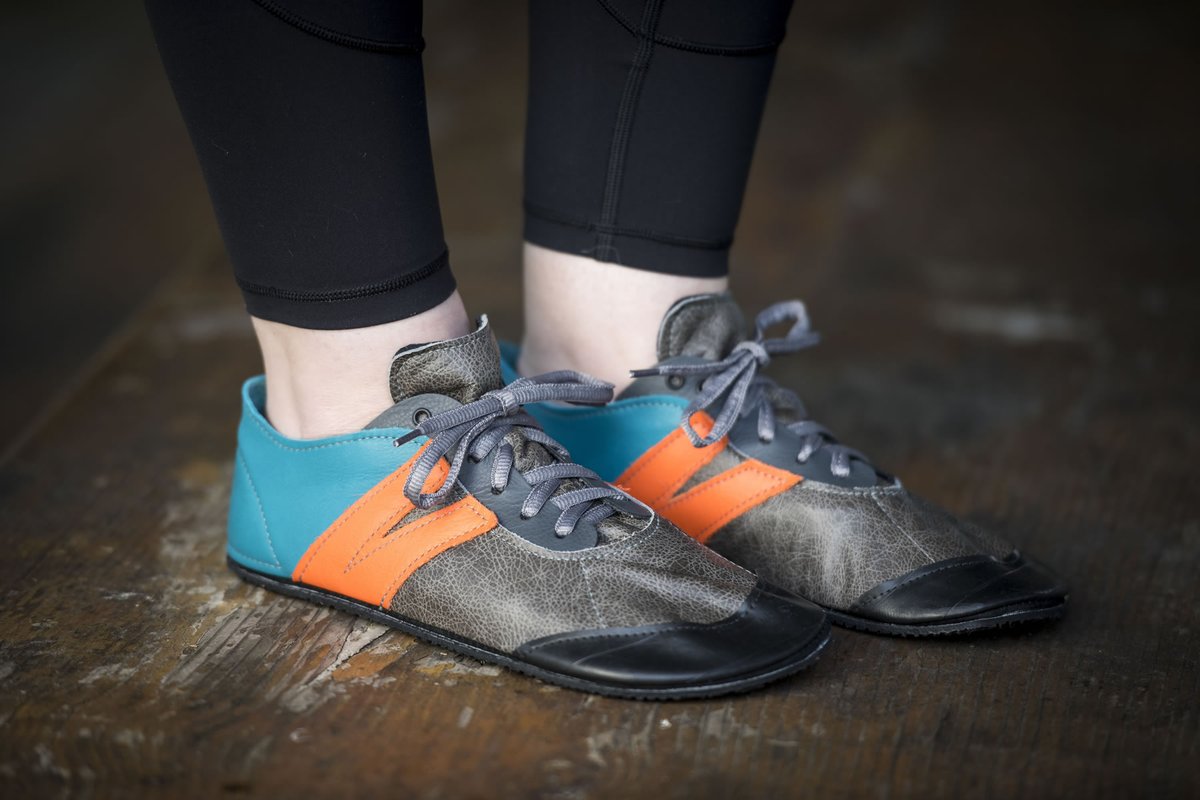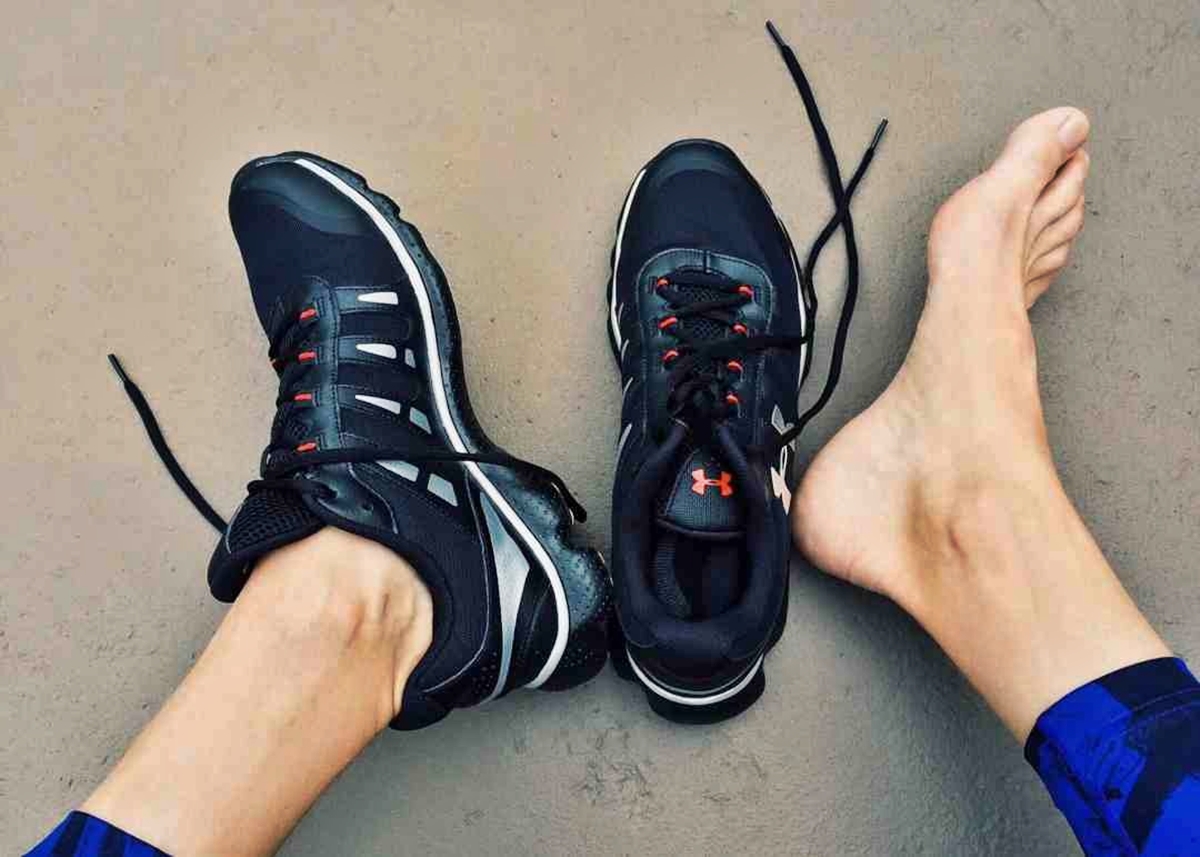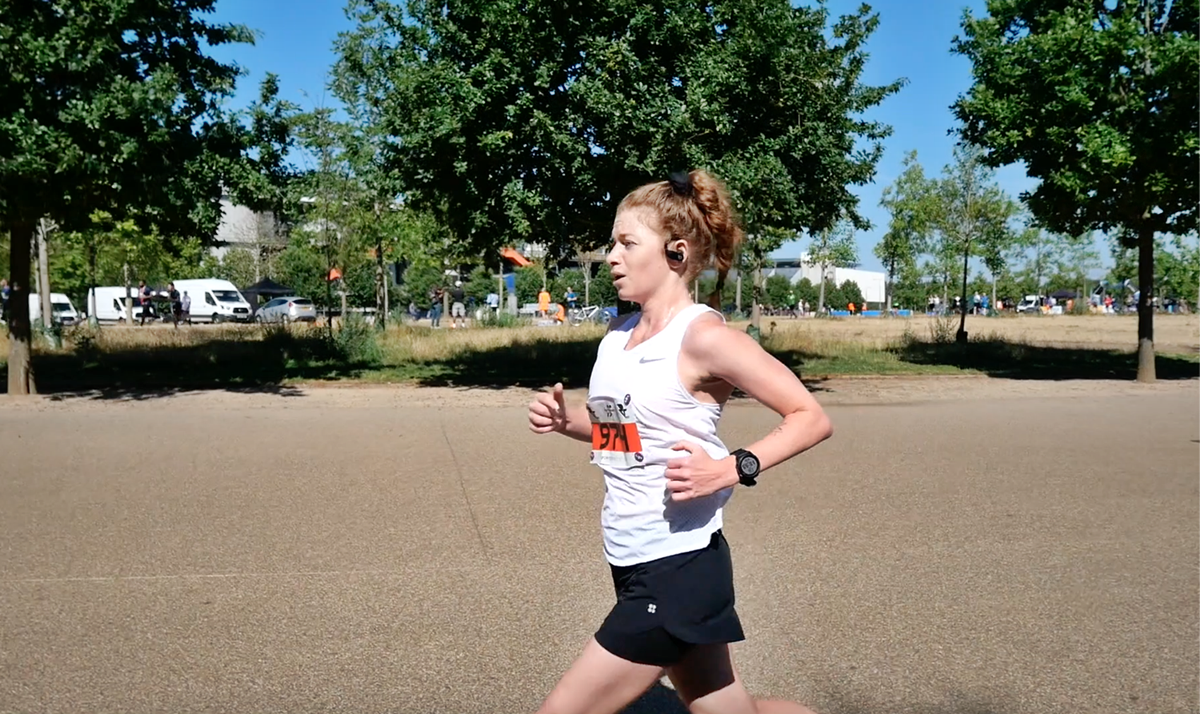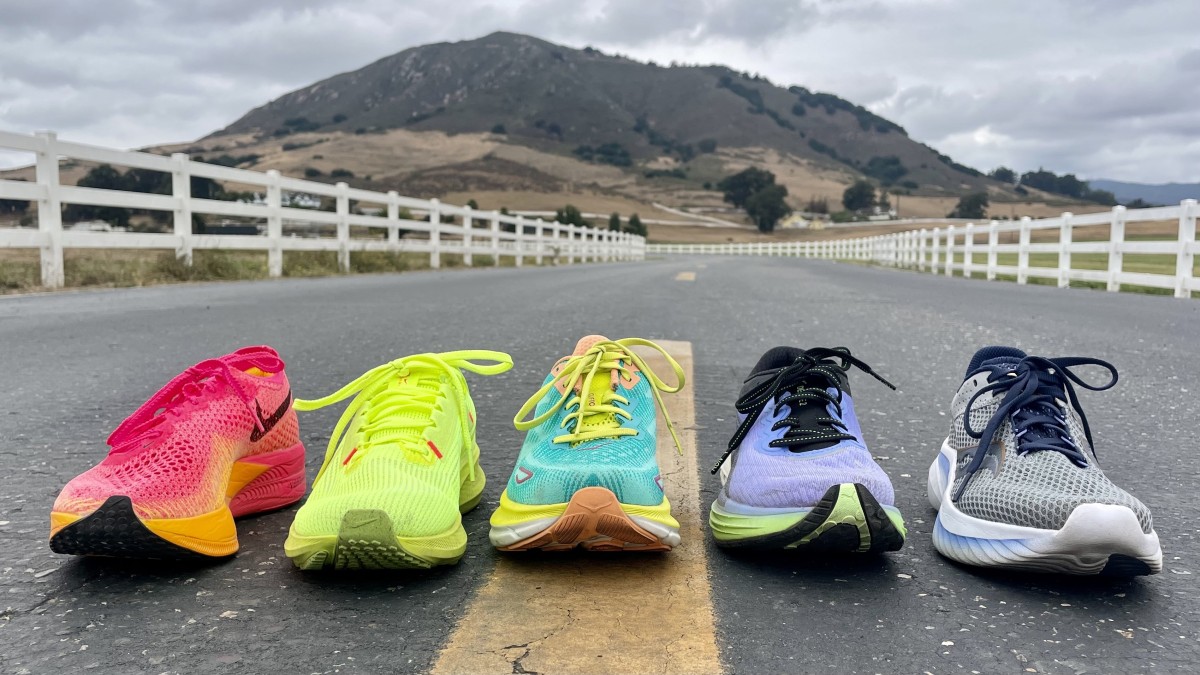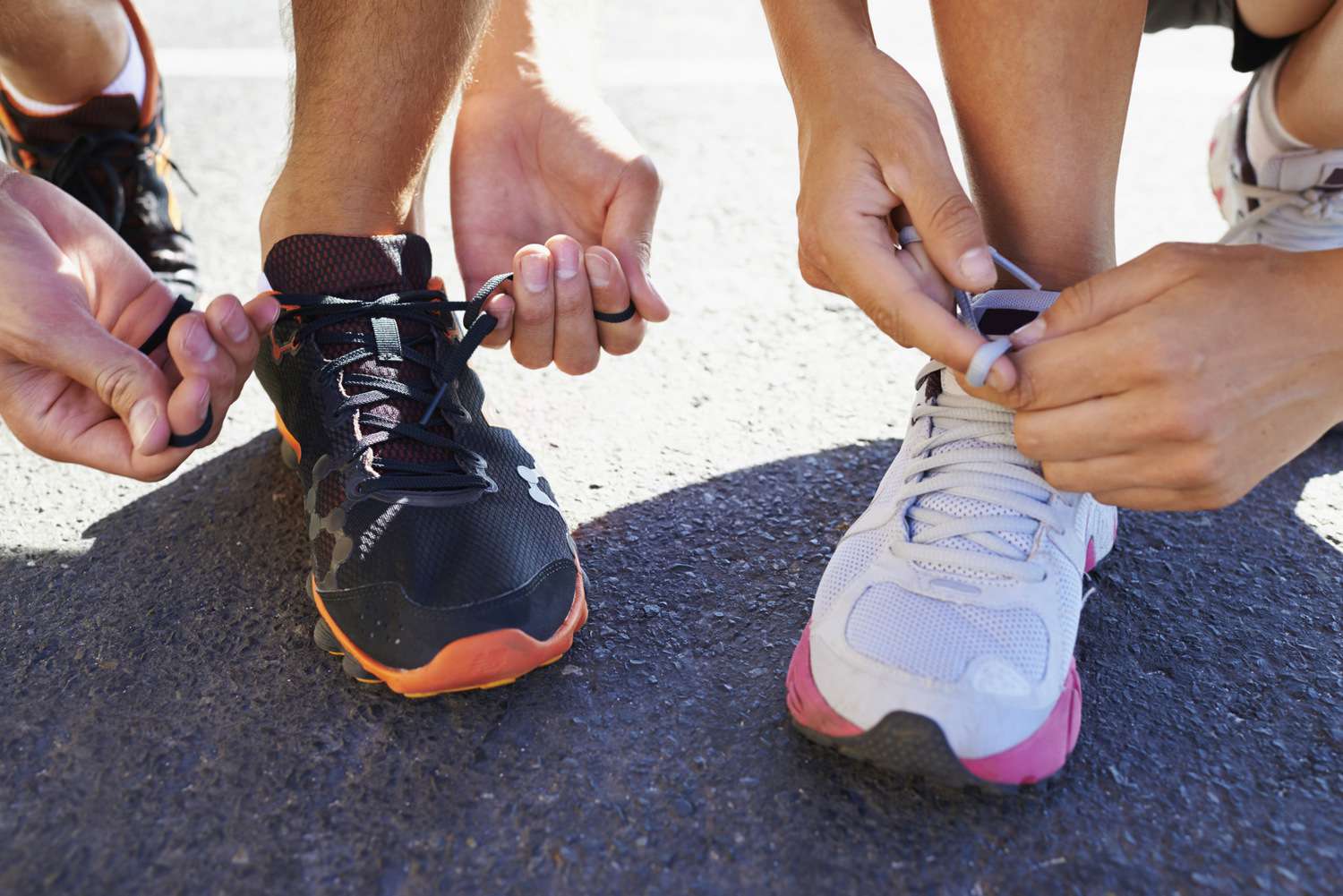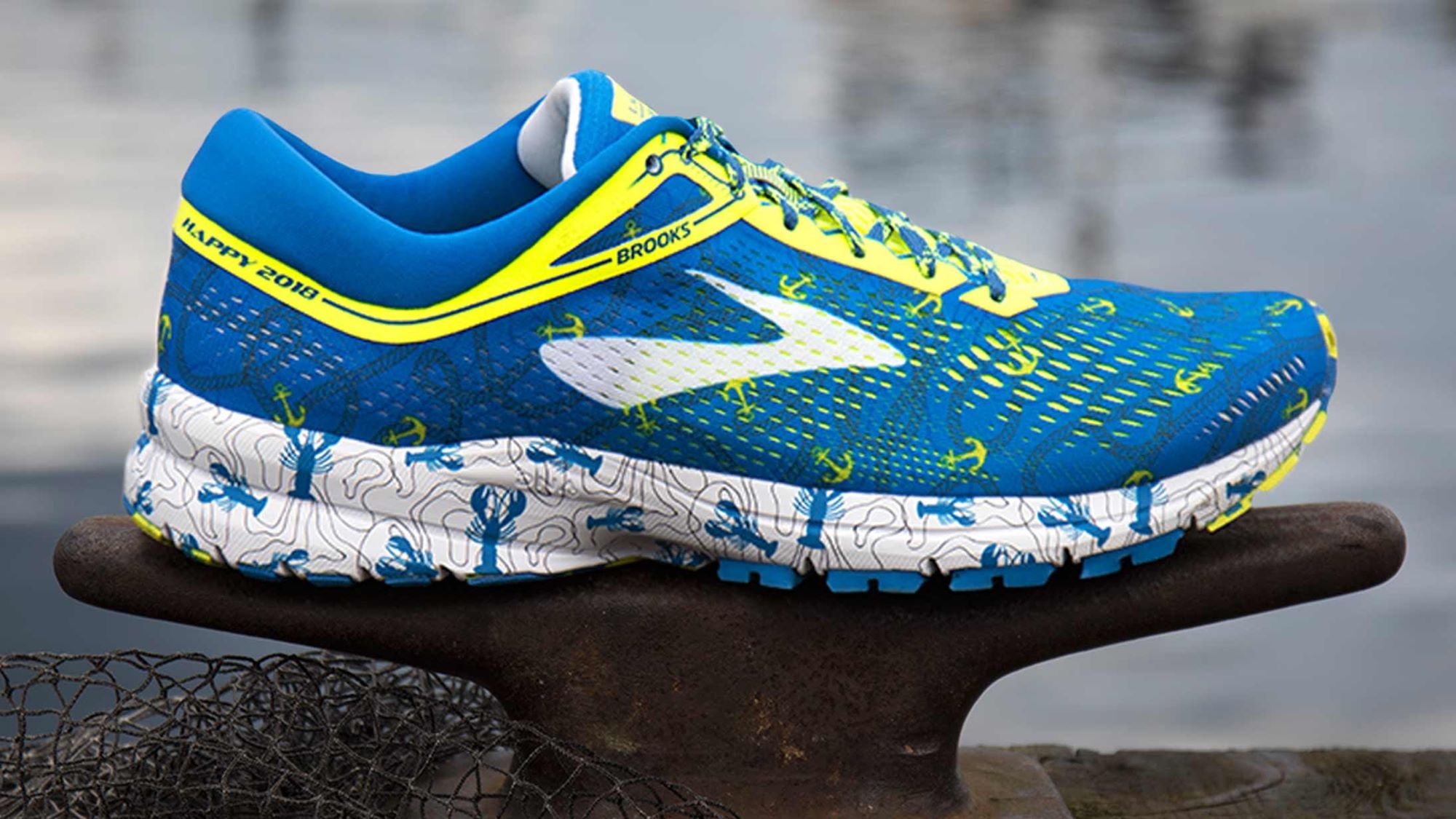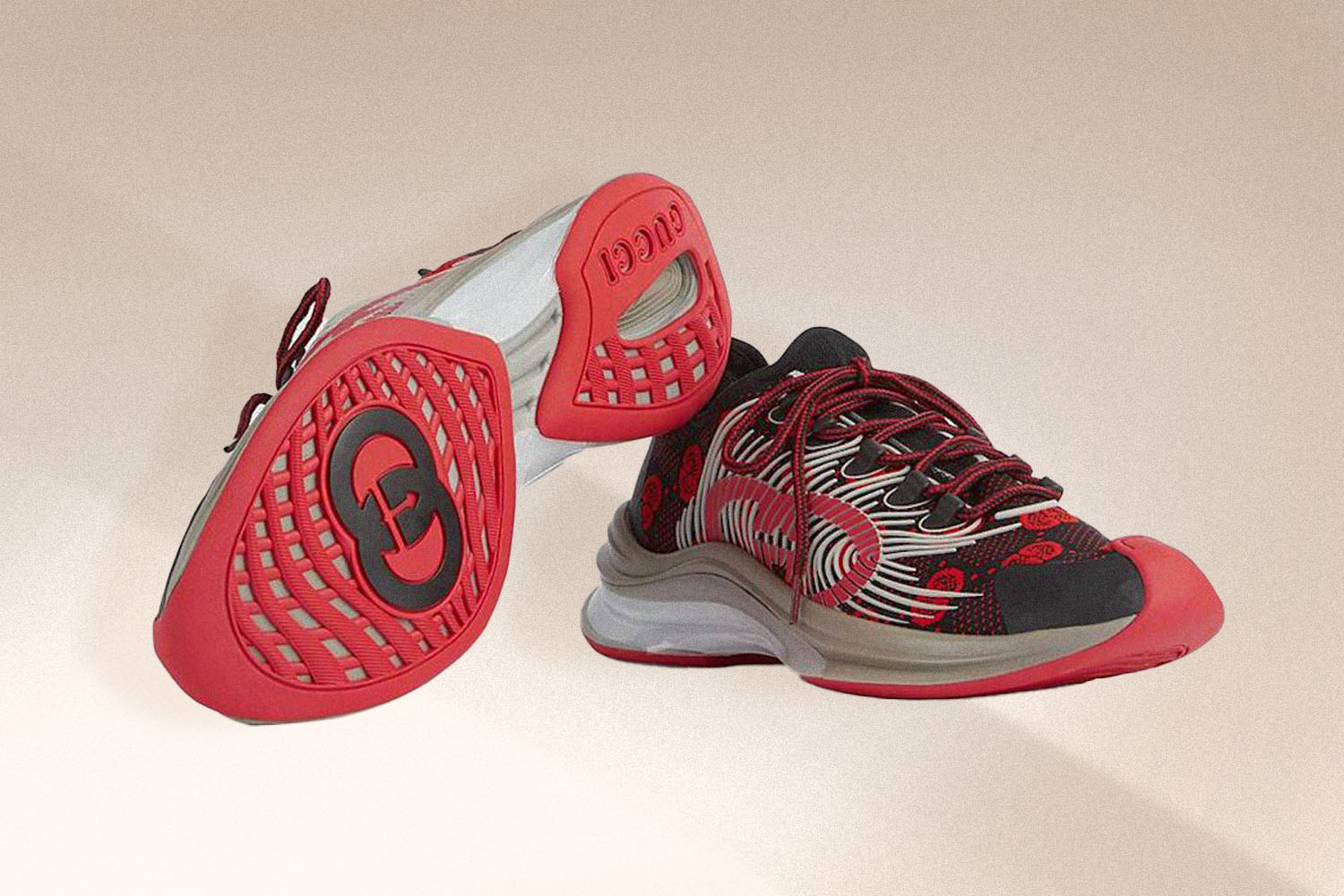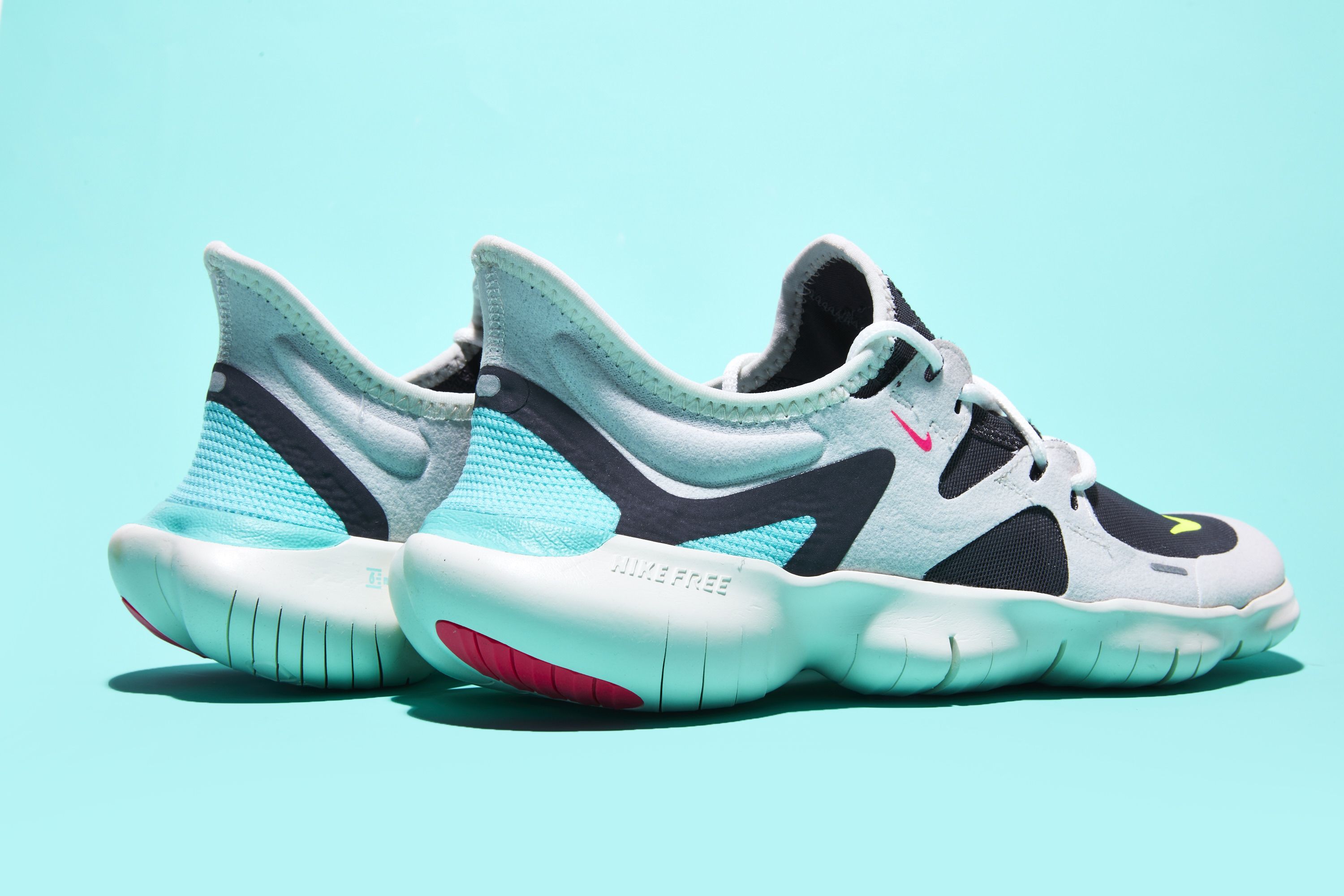Home>Misc>Featured>How To Choose Long-Distance Running Shoes


Featured
How To Choose Long-Distance Running Shoes
Modified: January 22, 2024
Discover the best long-distance running shoes featured in our guide. Learn how to choose the perfect pair for your next marathon or race.
Introduction
Choosing the right long-distance running shoes is crucial for any avid runner or marathon enthusiast. Whether you are training for a race or simply enjoy logging miles on the road or trails, having the proper footwear can significantly impact your performance and overall running experience.
With the wide variety of running shoes available on the market, it can be overwhelming to determine which ones are best suited for your needs. Factors such as arch type, foot pronation, cushioning, support, shoe size and fit, and brand reputation all play a role in making the right choice.
Furthermore, understanding the different types of long-distance running shoes is essential to find the perfect fit for your running style and biomechanics. From neutral shoes for runners with normal pronation to stability shoes for overpronators, motion control shoes for severe overpronation, and minimalist shoes for those interested in barefoot running, each type offers specific features and benefits.
In this article, we will explore the importance of choosing the right long-distance running shoes and explain the factors to consider when making your selection. We will also delve into the different types of running shoes available and provide tips on trying on and testing shoes, as well as buying them online. By the end of this article, you will be armed with the knowledge needed to make an informed decision and find the perfect pair of long-distance running shoes for your training and racing.
Importance of Choosing the Right Long-Distance Running Shoes
When it comes to long-distance running, the importance of wearing the right shoes cannot be overstated. Your feet are the foundation of your running mechanics, and the shoes you choose can significantly impact your performance, comfort, and overall well-being.
One of the primary reasons why selecting the right long-distance running shoes is crucial is injury prevention. Running puts a tremendous amount of stress on your feet and lower body, and wearing shoes that do not provide adequate support or cushioning can lead to a host of issues, such as plantar fasciitis, shin splints, Achilles tendonitis, or even stress fractures.
Additionally, choosing shoes that are tailored to your specific foot mechanics can help address any biomechanical imbalances and reduce the risk of overpronation or underpronation. Overpronation, where the foot rolls inward excessively, or underpronation, where the foot does not roll inward enough, can lead to increased strain on certain areas of the foot and lower leg, contributing to injuries over time.
Comfort is another critical factor in selecting the right long-distance running shoes. When you are running for extended periods, the last thing you want is to be dealing with uncomfortable shoes that rub, chafe, or cause blisters. Finding shoes with the right fit, cushioning, and materials can make a world of difference in your running experience.
Performance is also directly linked to the shoes you choose. Long-distance running shoes are designed to provide the necessary stability, shock absorption, responsiveness, and energy return to enhance your running efficiency. The right pair of shoes can help you maintain proper form, reduce fatigue, and even improve your running speed.
Lastly, investing in high-quality, well-fitting running shoes can save you money in the long run. While it may be tempting to opt for cheaper or generic shoes, they often lack the durability and performance features needed for long-distance running. Investing in a reputable brand and a well-constructed pair of shoes can extend their lifespan and provide better value for your money.
In summary, choosing the right long-distance running shoes is essential for injury prevention, comfort, performance, and value. By selecting shoes that support your unique foot mechanics, provide cushioning and stability, and are comfortable for long runs, you can enhance your running experience, reduce the risk of injuries, and achieve your performance goals. Now, let’s explore the key factors to consider when choosing your long-distance running shoes.
Factors to Consider When Choosing Long-Distance Running Shoes
When it comes to choosing long-distance running shoes, there are several important factors to consider. These factors will help ensure that you find the perfect pair of shoes that offer optimal comfort, support, and performance for your specific needs. Let’s take a closer look at each of these factors:
- Arch Type and Foot Pronation: Understanding your arch type and foot pronation is crucial when selecting running shoes. There are three main arch types: high arches, normal arches, and flat feet. Each arch type requires different levels of support and cushioning. Additionally, foot pronation refers to the natural inward rolling motion of the foot during running. It is important to determine whether you have normal pronation, overpronation, or underpronation, as it will help you choose the right type of shoe that provides the necessary stability and support.
- Cushioning and Support: Long-distance running involves repeated impact on your feet. Therefore, cushioning is vital to absorb shock and reduce the risk of injuries. Look for shoes with adequate cushioning in the midsole and heel areas. Additionally, consider the level of support the shoes provide. This will vary depending on your foot pronation. Overpronators may benefit from stability shoes with additional support features, while neutral runners may prefer lighter and more flexible shoes.
- Shoe Size and Fit: Proper shoe size and fit are crucial for comfort and preventing issues such as blisters or black toenails. Your running shoes should have a thumb’s width of space between your longest toe and the front of the shoe, and they should offer a snug fit around the heel and midfoot. Take the time to try on several brands and models to find the perfect fit for your feet.
- Brand and Market Reputation: When it comes to running shoes, the brand and market reputation can indicate the quality and reliability of the product. Well-established brands often invest in research and development to improve their shoe designs, resulting in better performance and durability. Reading reviews and seeking recommendations from experienced runners can also help you gauge the reliability of a particular brand.
By considering these factors when choosing your long-distance running shoes, you can ensure that you select a pair that aligns with your specific needs and preferences. The next section will delve into the different types of long-distance running shoes available on the market.
Arch Type and Foot Pronation
Understanding your arch type and foot pronation is crucial when choosing long-distance running shoes. These two factors play a significant role in determining the type of support and cushioning that your feet require, ultimately impacting your running comfort and performance.
Arch types are generally categorized into three main categories: high arches, normal arches, and flat feet. High arches are characterized by a distinct curve along the inside of the foot, while flat feet have little to no arch at all. Normal arches fall somewhere in between. It’s essential to identify your arch type, as different arch types have different requirements for support and cushioning in running shoes.
Foot pronation refers to the natural inward rolling motion of the foot as it strikes the ground during the running gait cycle. The three common types of foot pronation are:
- Normal Pronation: This is when the foot rolls inward slightly, distributing the force evenly. Runners with normal pronation can typically wear a wide range of shoes but may benefit from neutral shoes with moderate support and cushioning.
- Overpronation: Overpronation occurs when the foot excessively rolls inward, placing additional stress on the inner part of the foot and lower leg. Runners with overpronation may require stability shoes that offer additional support features to help correct the foot’s rolling motion and promote proper alignment.
- Underpronation (Supination): Underpronation is when the foot doesn’t roll inward enough during the gait cycle, resulting in the majority of the impact being absorbed by the outer part of the foot. Runners with underpronation may benefit from neutral shoes with ample cushioning to help absorb shock effectively.
Knowing your arch type and foot pronation can help you narrow down the options when choosing long-distance running shoes. Most running shoe manufacturers design shoes specifically for each type of arch and pronation, providing the necessary support and cushioning in the appropriate areas of the shoe.
It’s important to note that while arch type and foot pronation are important factors to consider, they are not the only ones. Other factors, such as cushioning, support, shoe size, and fit, should also be taken into account to ensure optimal comfort and performance.
In the next section, we will explore the importance of cushioning and support in long-distance running shoes and how they can impact your overall running experience.
Cushioning and Support
Cushioning and support are two crucial factors to consider when choosing long-distance running shoes. They can greatly impact your running comfort, protect your feet from impact-related injuries, and enhance your overall running performance.
Cushioning refers to the amount of padding and shock absorption that a shoe provides. Long-distance runners subject their feet to repetitive impact forces, and proper cushioning helps to reduce the stress on their joints and muscles. The level of cushioning in running shoes can vary, ranging from minimal to maximum. The choice of cushioning depends on your personal preference and the type of running you engage in. Some runners prefer a softer and more plush cushioned shoe, while others may opt for a more responsive and firmer cushioning for a faster-paced run.
Support, on the other hand, refers to the stability features incorporated into the shoe design to help control overpronation, which is the excessive inward rolling of the foot. Overpronation can lead to various foot and leg problems, such as plantar fasciitis and shin splints. Running shoes designed for overpronators have additional support features, such as a medial post or a denser foam along the inner edge of the shoe, which helps to limit the foot’s inward roll and maintain proper alignment.
It’s important to note that not all runners require maximum cushioning or support. The ideal level of cushioning and support varies depending on your foot type, running style, and personal preference. Runners with normal pronation or underpronation may find a neutral shoe with moderate cushioning sufficient for their needs. Conversely, runners with overpronation may benefit from stability shoes that offer a combination of cushioning and support to address their specific biomechanical needs.
The key is to find the right balance of cushioning and support that works best for you. It’s recommended to try on different shoe models and consult with a knowledgeable salesperson or a podiatrist to ensure you choose the right shoe based on your specific requirements.
Additionally, it’s essential to regularly inspect your running shoes for signs of wear and tear. Over time, cushioning may compress and lose its effectiveness, and the support features may diminish. It is generally recommended to replace your running shoes every 300-500 miles, or when you start to notice a decrease in cushioning and support.
By considering the cushioning and support aspects when selecting long-distance running shoes, you can find a pair that offers the right level of comfort and protection, allowing you to run longer distances with reduced risk of injury. In the next section, we will discuss the importance of finding the correct shoe size and fit.
Shoe Size and Fit
When it comes to long-distance running shoes, choosing the right shoe size and achieving the perfect fit is of utmost importance. Ill-fitting shoes can lead to discomfort, blisters, and even injuries during your running sessions. Therefore, taking the time to find the right size and fit is essential for a successful and enjoyable running experience.
The first step in finding the right shoe size is to measure your feet accurately. Feet can change over time, so it’s recommended to have your feet measured periodically. Measure both feet, as they may differ in size, and use the measurements to determine the appropriate shoe size. Consider not only the length but also the width of your feet, as some shoe models come in different width options.
When trying on running shoes, ensure there is sufficient toe room. There should be about a thumb’s width of space between your longest toe (usually the big toe) and the front of the shoe. This allows for natural movement and prevents your toes from hitting the front of the shoe during long-distance runs.
The shoe should fit comfortably around the midfoot and heel. It should feel snug, but not overly tight or restrictive. A properly fitting shoe will provide support and stability while allowing some flexibility in the forefoot area for a natural toe-off during your stride.
It’s also essential to consider how your feet may change during a run. Feet can expand and swell slightly when running long distances and in warm weather. Therefore, it’s advisable to try on and test shoes later in the day or after a run to ensure a proper fit when your feet are at their largest.
When trying on shoes, don’t rush the process. Take the time to walk, jog, or run in the store if allowed, or simulate the movements you would typically make while running. This will give you a better sense of how the shoes feel and perform during motion.
Lastly, remember that every shoe brand and model can have slight variations in size and fit. Don’t be afraid to try on different brands or models to find the one that suits your feet best. What works for one person may not work for another, so it’s essential to listen to your own comfort and intuition.
In summary, finding the right shoe size and fit is crucial for long-distance running. Proper sizing and a comfortable fit can prevent common running issues such as blisters, discomfort, and even injuries. Pay close attention to toe room, midfoot and heel fit, and consider possible foot swelling during a run. By finding the right shoe size and fit, you will be well on your way to enjoying long-distance runs in comfort and style.
Brand and Market Reputation
When it comes to choosing long-distance running shoes, the brand and market reputation are important factors to consider. The brand behind the shoe can provide valuable insights into its quality, durability, and overall performance. Opting for a reputable brand can offer you peace of mind and increase the chances of finding a high-quality pair of running shoes that meet your needs.
Well-established brands have often been in the market for years and have built a reputation for producing reliable and innovative running shoes. These brands invest significant resources in research and development to continually improve their shoe designs, taking into account the feedback of runners and advances in athletic technology.
One advantage of choosing a popular brand is the availability of extensive customer reviews and feedback. These reviews can provide valuable insights into the specific models and their performance. Reading reviews from experienced runners who have already tested the shoes can help you gauge the durability, comfort, and overall satisfaction with the brand’s products.
Reputable brands also tend to have a wider range of options available. They typically invest in developing various shoe models to cater to different foot types, pronation patterns, and running styles. Having a diverse selection to choose from increases the likelihood of finding a shoe that meets your specific needs and preferences.
Another benefit of choosing a well-known brand is the availability of expert advice. Many reputable shoe manufacturers have knowledgeable customer service representatives who can provide guidance on selecting the appropriate shoe for your foot type, running style, and goals. They can offer valuable recommendations based on their expertise and help answer any questions you may have.
However, it’s important to note that while brand reputation is a useful indicator, it should not be the sole determining factor in your decision. Each runner is unique, and what works for one person may not work for another. It’s essential to consider your specific requirements, such as arch type, foot pronation, cushioning, and support, in addition to the brand reputation.
In summary, the brand and market reputation play a significant role in selecting long-distance running shoes. Reputable brands often deliver high-quality, durable, and performance-driven shoes. Their extensive customer reviews, wide range of options, and expertise contribute to the overall confidence and satisfaction with their products. However, it’s important to balance the brand reputation with your specific needs and preferences when making the final decision.
Understanding Different Types of Long-Distance Running Shoes
When it comes to long-distance running, it’s essential to understand the different types of shoes available on the market. Each type is designed to cater to specific foot mechanics and running styles, providing the necessary support and functionality to enhance your running experience. Let’s explore the various types of long-distance running shoes:
- Neutral Shoes: These shoes are designed for runners with normal pronation. They offer a good balance of cushioning and flexibility without any additional support features. Neutral shoes are suitable for runners with a neutral foot strike, providing a comfortable and responsive ride.
- Stability Shoes: Stability shoes are ideal for runners who experience mild to moderate overpronation. These shoes offer additional support features to help limit excessive inward rolling and promote proper alignment. Stability shoes provide a good blend of cushioning and support for a smooth and controlled running motion.
- Motion Control Shoes: Motion control shoes are designed for runners with severe overpronation. These shoes provide maximum support and stability to prevent excessive inward rolling of the foot. Motion control shoes often feature a firm midsole and supportive features along the inner edge to control pronation and maintain a balanced gait.
- Minimalist Shoes: Minimalist shoes, also known as barefoot shoes, are designed for runners who prefer a more natural running experience. These shoes have minimal cushioning and a low-profile design, allowing your feet to interact more with the ground. They promote a forefoot or midfoot strike and can help improve lower leg strength and foot proprioception.
When selecting the right type of shoe for your needs, it’s important to consider factors such as your arch type, foot pronation, running style, and personal preferences. This will help determine the level of cushioning, support, and flexibility that you require.
Keep in mind that these shoe categories are not strict classifications, and individual shoe models within each category may offer slight variations in features and performance. It’s always a good idea to try on different shoes and test them out to find the specific shoe model that best suits your foot and running mechanics.
Understanding the different types of long-distance running shoes enables you to make an informed decision and find the perfect pair that matches your unique needs and preferences. Now that you have a better grasp of the various options, let’s move on to the next section, which explores the importance of trying on and testing long-distance running shoes.
Neutral Shoes for Runners with Normal Pronation
Neutral shoes are specifically designed for runners with normal pronation, where the feet roll inward slightly upon impact. These shoes offer a balanced combination of cushioning, flexibility, and responsiveness, making them an excellent choice for runners who do not require additional support features.
One of the key features of neutral shoes is their versatility. They are suitable for a wide range of runners, from beginners to experienced athletes, and can be used for different types of runs, including long-distance training, tempo runs, or even racing. Due to their neutral design, they allow your feet to move naturally through the gait cycle without any added correction or assistance.
Neutral shoes typically feature a moderate amount of cushioning in the midsole, providing adequate shock absorption and protection. The cushioning is often responsive, allowing for a smooth and efficient stride. The midsole may also contain technologies or materials that offer additional energy return, propelling you forward with each step.
In terms of support, neutral shoes provide a neutral platform, meaning they do not have any pronation control features. This allows your foot to maintain its natural motion and alignment without any interference. Their focus is on providing comfort and a responsive ride rather than correcting any potential biomechanical issues.
When selecting neutral shoes, it’s important to consider factors such as your foot shape, arch type, and personal preferences. Some neutral shoes may offer a wider toe box or a more accommodating fit, while others may have a more secure and snug fit. Trying on different models and brands will help you find the perfect pair that feels comfortable and supports your feet effectively.
Neutral shoes are a popular choice among runners with normal pronation due to their versatility and comfort. However, it’s essential to remember that every runner is unique, and what works for one person may not work for another. It’s always recommended to try on shoes, test them out with a short run or jog, and assess how they feel and perform before making a final decision.
In the next section, we will explore stability shoes, which are designed for runners who experience mild to moderate overpronation.
Stability Shoes for Overpronators
Stability shoes are specifically designed for runners who experience mild to moderate overpronation. Overpronation occurs when the foot rolls inward excessively during the running gait cycle, leading to an imbalanced stride and increased risk of injuries. Stability shoes offer additional support features to help address this issue and promote proper foot alignment.
One of the key features of stability shoes is the medial support they provide. This support is typically located on the inner side of the shoe and is designed to control the inward rolling motion of the foot. It works by providing a denser foam, a firmer midsole, or a structured post that helps limit overpronation and maintain a more neutral foot position. The medial support can vary in intensity, with some shoes offering mild support for runners with slight overpronation and others providing stronger support for those with more significant pronation issues.
In addition to the medial support, stability shoes often incorporate other elements to enhance stability. This can include features such as a wider base, a reinforced heel counter, or a guidance system that helps guide the foot through a more efficient gait cycle.
While stability shoes focus on correcting overpronation, they still provide a good level of cushioning and comfort. The cushioning in stability shoes is typically designed to absorb shock and provide a smooth ride. Some models may incorporate technologies or materials that offer increased responsiveness or energy return, allowing for a more efficient stride.
When selecting stability shoes, it’s important to consider factors such as the degree of overpronation, foot shape, and personal preferences. The level of support needed can vary among individuals, so it’s essential to find a shoe that suits your specific needs. Trying on different stability shoes and testing them with a short run can help you determine the right level of support and comfort.
It’s worth noting that stability shoes are not exclusive to overpronators. Runners with normal pronation who prefer additional support and stability may also find these shoes beneficial. It’s always recommended to consult with a knowledgeable salesperson or a healthcare professional to get an accurate assessment of your foot mechanics and to receive personalized recommendations.
In the next section, we will explore motion control shoes, which are specifically designed for runners with severe overpronation.
Motion Control Shoes for Severe Overpronators
Motion control shoes are the ideal choice for runners who experience severe overpronation. Severe overpronation involves an excessive inward rolling motion of the foot, which can lead to imbalances in the lower body and an increased risk of injuries. Motion control shoes are specifically designed to provide the highest level of support and stability to address this issue.
One of the key features of motion control shoes is their superior support system. These shoes typically incorporate a combination of technologies and materials to ensure maximum control of pronation. They often feature a structured medial post, which is a firmer and denser foam located on the inner side of the shoe. The medial post helps control the inward rolling motion of the foot, preventing it from overpronating and promoting a more neutral foot position.
Motion control shoes may also have additional reinforcement in the midsole or heel area, providing extra stability and preventing excessive movement. This helps to maintain proper alignment throughout the running gait cycle, reducing the risk of injuries caused by overpronation.
In terms of cushioning, motion control shoes offer a balance between comfort and stability. They provide a sufficient amount of cushioning to absorb impact forces and reduce the stress on the foot and lower leg. The cushioning in these shoes is often more structured and firmer compared to other types of running shoes, enhancing stability and control.
It’s important to note that motion control shoes are specifically designed for runners with severe overpronation. If you have mild to moderate overpronation, stability shoes may be more suitable for your needs. It’s recommended to consult with a healthcare professional or a knowledgeable salesperson to determine the appropriate level of support required for your feet.
When trying on motion control shoes, consider factors such as the fit and feel. The shoes should offer a snug fit around the midfoot and heel, preventing any excessive movement. However, they should not feel overly tight or restrictive, as this could lead to discomfort or blisters during long-distance runs.
Ultimately, motion control shoes are designed to provide the highest level of support and stability for runners with severe overpronation. They are built to help correct the foot’s natural tendency to roll inward excessively, promoting a more neutral and controlled running gait. Selecting the right motion control shoe can help alleviate the risk of injuries and provide a comfortable and stable running experience.
In the next section, we will explore minimalist shoes, which offer a different approach to long-distance running.
Minimalist Shoes for Barefoot Running
Minimalist shoes, also known as barefoot shoes, are designed for runners who seek a more natural and minimalist running experience. These shoes aim to mimic the feeling of running barefoot while providing some degree of protection and support.
One of the key features of minimalist shoes is their minimal cushioning and low-profile design. They typically have a thin and flexible sole that allows for a greater connection to the ground. This enables runners to experience a more natural foot strike, engaging the muscles in the feet and lower legs to provide additional support and stability.
Minimalist shoes encourage a forefoot or midfoot strike, as opposed to a heel strike. This means that when running, the initial contact with the ground is made by the forefoot or midfoot rather than the heel. This running style distributes the impact forces more evenly, reducing the strain on the joints and minimizing the risk of certain injuries associated with heel striking.
By promoting a more natural foot motion, minimalist shoes can help improve foot proprioception and strengthen the muscles in the feet and lower legs. They allow for greater sensory feedback and encourage runners to develop a more efficient running form.
It’s important to note that transitioning to minimalist shoes requires a gradual adjustment period. Since minimalist shoes offer less cushioning and support compared to traditional running shoes, the feet and lower legs need time to adapt to the increased workload. It’s recommended to start with short runs or walks and slowly increase the distance and intensity over time to allow your body to adjust to the unique demands of barefoot-style running.
While some runners prefer running exclusively in minimalist shoes, others may use them as a training tool to supplement their regular running routine. It’s crucial to listen to your body and determine what works best for you.
When choosing minimalist shoes, consider factors such as the fit and protection. The shoes should provide a snug and secure fit, preventing any excessive movement that could lead to discomfort or blisters. Additionally, look for models that offer some level of protection, such as a durable outsole or a protective upper, to shield your feet from sharp objects and rough terrain.
While minimalist shoes can offer a unique and rewarding running experience, they are not suitable for everyone. It’s essential to assess your individual needs, running style, and foot strength before deciding to incorporate minimalist shoes into your training routine.
In the next section, we will discuss the importance of trying on and testing long-distance running shoes to ensure the perfect fit.
Trying On and Testing Long-Distance Running Shoes
When it comes to choosing long-distance running shoes, trying them on and testing them is a crucial step in ensuring the perfect fit and performance. By taking the time to assess the shoes before making a purchase, you can avoid discomfort, blisters, and potential injuries during your runs. Here are some key considerations when trying on and testing long-distance running shoes:
1. Fit: The fit of the shoe is paramount. Aim for a snug and secure fit that holds your foot in place without being too tight or constricting. Ensure that the shoe provides enough room in the toe box to allow for natural toe movement and prevent excessive pressure or friction.
2. Walk and run: Take the shoes for a test walk or run around the store if permitted. Pay attention to any areas of discomfort or rubbing. Walking or jogging in the shoes will give you a better sense of how they feel and perform, allowing you to make an informed decision.
3. Comfort: Comfort is key for long-distance running shoes. Consider the cushioning and responsiveness of the shoes. The cushioning should provide adequate shock absorption without feeling too soft or too firm. Ensure that the shoe offers support and stability while allowing the natural movement of your feet.
4. Flexibility: Assess the flexibility of the shoe’s sole. It should offer a good balance of flexibility and support. Too much flexibility may compromise stability, while too little flexibility may hinder your natural foot motion.
5. Terrain-specific testing: If you primarily run on specific terrains, such as road or trail, consider testing the shoes in a similar environment. This can give you a better understanding of how the shoes perform on the surfaces you typically run on.
6. Socks: Wear the type of socks you typically use for running when trying on the shoes. This will help you gauge if there is enough room inside the shoe and prevent any surprises once you start using them for your runs.
7. Time of day: Keep in mind that feet can swell slightly throughout the day and during physical activity. Consider trying on shoes later in the day or after a run to ensure they will still fit comfortably during long-distance runs.
8. Personal preference: Trust your instincts and personal preferences when trying on long-distance running shoes. Each runner is unique, and what feels comfortable and supportive for one person may not work for another. Choose the shoes that feel right for you.
Remember, selecting the right long-distance running shoes is a personal journey. It’s important to devote time and effort to find the perfect fit that suits your foot shape, running style, and unique needs. By thoroughly trying on and testing the shoes, you can make an educated decision and set yourself up for a successful and enjoyable running experience.
In the next section, we will provide some tips for buying long-distance running shoes online.
Tips for Buying Long-Distance Running Shoes Online
Buying long-distance running shoes online can be a convenient and efficient way to find the right pair, especially if you have limited access to physical stores or prefer the convenience of online shopping. However, it’s essential to keep a few tips in mind to ensure you make the best purchase possible. Here are some key tips for buying long-distance running shoes online:
1. Know your needs: Before browsing online, identify your specific needs and preferences for long-distance running shoes. Consider factors such as your arch type, foot pronation, cushioning preferences, and any specific features you require for your running style.
2. Research and read reviews: Take the time to research different brands and models of long-distance running shoes. Read product descriptions and customer reviews to gather insights on the shoe’s fit, comfort, durability, and overall performance. Pay attention to reviews from runners with similar foot mechanics to yours.
3. Use size and fit guides: Most online retailers provide size and fit guides for their shoes. Take accurate measurements of your feet and compare them with the size guide provided by the brand or retailer. Pay attention to any notes or recommendations regarding shoe fit or sizing.
4. Check return policies: Understand the return and exchange policies of the online retailer before making a purchase. This will give you peace of mind in case the shoes do not fit or meet your expectations. Some retailers offer free returns, which can be beneficial when buying shoes online.
5. Look for expert advice: Some online retailers provide guidance from running experts or online chat support to help you make the right choice. Take advantage of this assistance to get personalized recommendations based on your needs and preferences.
6. Consider previous shoe models: If you have owned a specific shoe model in the past and were satisfied with it, consider looking for that previous model online. This can be helpful if you have a known fit and comfort preference.
7. Check for sales and promotions: Keep an eye out for sales, discounts, or promotions on long-distance running shoes online. This can help you save money while still getting a high-quality pair of shoes.
8. Ask for recommendations: If you’re unsure about which shoes to choose, reach out to fellow runners or online running communities for recommendations. Hearing from others who have already tested the shoes can provide valuable insights and help narrow down your options.
Taking these tips into consideration when buying long-distance running shoes online can help you make an informed decision and increase the likelihood of finding the right pair for your needs. Remember to always prioritize your comfort, fit, and specific running requirements when making your final choice.
Now that you’re equipped with these tips, you can confidently explore online retailers and find the perfect long-distance running shoes from the comfort of your own home.
Conclusion
Choosing the right long-distance running shoes is essential for runners of all levels. The shoes you select can significantly impact your comfort, performance, and overall running experience. By considering factors such as arch type, foot pronation, cushioning, support, shoe size and fit, and brand reputation, you can make an informed decision and find the perfect pair to suit your needs.
Understanding the different types of long-distance running shoes is also crucial. Whether you opt for neutral shoes for runners with normal pronation, stability shoes for overpronators, motion control shoes for severe overpronators, or minimalist shoes for those seeking a more natural running experience, each type offers unique features and benefits tailored to specific foot mechanics and preferences.
Taking the time to try on and test the shoes is essential, especially when purchasing online. Ensuring a proper fit, comfort, and performance through walking, jogging, or running in the shoes will help prevent discomfort, blisters, and potential injuries during your runs. Additionally, researching and reading customer reviews, understanding return policies, and seeking expert advice can contribute to a successful online shopping experience.
Remember, finding the perfect pair of long-distance running shoes is a personal journey. Prioritize your individual needs, preferences, and running style. What works for one runner may not work for another. By investing in high-quality, well-fitting shoes, you can enhance your running performance, minimize the risk of injuries, and enjoy many miles of comfortable and enjoyable running.
So lace up your shoes, hit the road, and embrace the joy of long-distance running with the confidence of knowing you have chosen the right pair of shoes to accompany your every stride.
